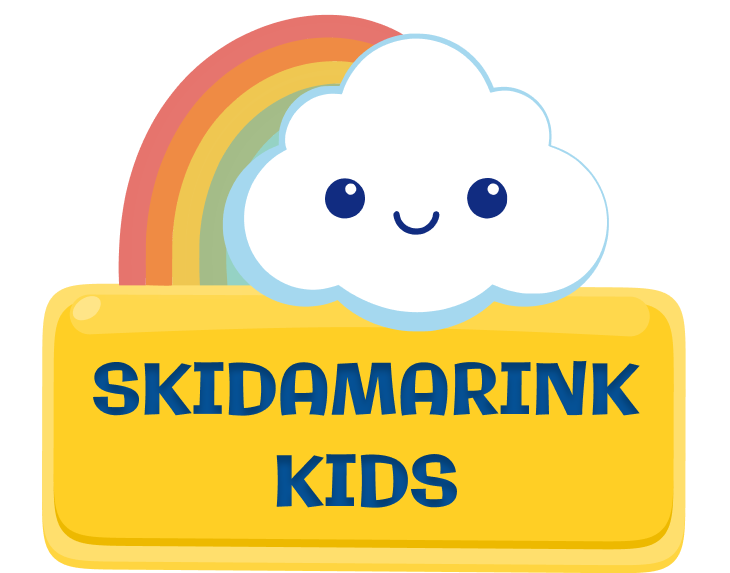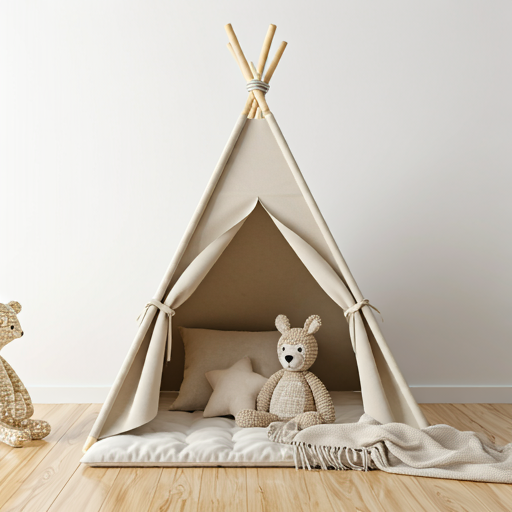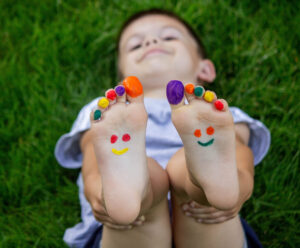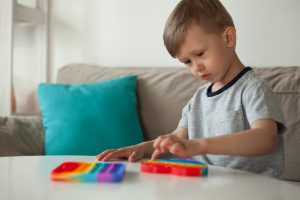Your child melts down over small frustrations. They can’t calm themselves once upset. By dinnertime, everyone’s emotions are running high. You’ve tried everything, but what your child really needs is a calm down corner for kids.
Sound familiar? You’re not alone. Every parent faces these challenging moments.
As an occupational therapist, I’ve helped hundreds of families transform these daily struggles with this simple tool. This dedicated space can change everything about how your child handles big emotions.
What Is a Calm Down Corner for Kids?
In my practice, I explain to parents that a calm down corner for kids is essentially a therapeutic space designed to help children self-regulate. It’s a designated area where kids can go to process their emotions and calm their nervous systems. Think of it as their personal reset zone.
Through my work with families, I’ve seen how these spaces provide several key benefits:
Relief from feeling overwhelmed – When a child’s nervous system is in overdrive, having a predictable place to decompress can prevent full meltdowns.
A safe space for managing big feelings – This should be a no-judgment zone where children can process emotions at their own pace.
Tools for emotional growth – It provides real, tangible strategies they’ll use throughout their lives.
Important Note from My Experience
This is NOT a time-out spot! The child should always choose when to use it and how long to stay. I always tell parents to check in regularly. Not to rush the process, but to ensure the child doesn’t feel isolated.
When my daughter was little, time-outs were the go-to strategy. Putting her in time-out often increased the frequency and intensity of her meltdowns. I now know this is because this strategy focuses on punishment. The goal should be helping children learn to calm down on their own. I wish I had known about this tool for her!
The Science Behind Why Calm Down Corners Work
From an occupational therapy perspective, these spaces work because they address how children’s nervous systems function. When a child is dysregulated (whether from sensory overload, big emotions, or stress), their brain goes into fight, flight, or freeze mode.
Traditional discipline approaches often don’t work during these moments. Why? The logical part of our brains isn’t accessible when we’re dysregulated. However, when we provide the right sensory input and environment, we can help their nervous system return to a regulated state. That’s when learning and emotional processing can actually take place. That’s when you can work on giving choices for better behavior.
Want to understand more about why children struggle with self-regulation? Read our guide on Why Your Child Can’t Self Regulate: The Hidden Brain Issue.
Benefits of a Calm Down Corner for Kids
Emotional Regulation Improvements
Parents consistently report these changes after creating a calm down corner for kids:
Helps children calm down faster – I’ve seen kids learn to recognize their early warning signs. They use their space proactively instead of waiting until they’re completely overwhelmed.
Helps them recognize emotions – Using visual tools like emotion charts, children develop emotional vocabulary and self-awareness.
Helps them feel better more quickly – By getting their nervous system out of fight, flight, freeze mode, they can return to a regulated state faster.
Makes meltdowns less intense – When children have tools to use before they become completely dysregulated, the intensity and duration of difficult moments decreases significantly.
Building Independence
Calm down corners build independence in powerful ways:
Handling emotions without constant adult intervention – Children develop confidence in their own abilities to cope.
Learning what works for their unique nervous system – Every child has different sensory needs. The corner helps them figure out their personal toolkit.
Developing lifelong skills – These self-regulation strategies transfer to school, friendships, and eventually adult relationships.
Sensory Support Benefits
Meeting your child’s sensory needs is crucial for self-regulation. Calming corners address sensory processing needs in these ways:
Calms an overwhelmed nervous system – Through carefully chosen sensory tools that provide organizing input.
Reduces anxiety and worry – Using evidence-based calming techniques.
Provides the right kind of sensory input – Whether a child needs more input (sensory seeking) or less input (sensory avoiding).
Creates a peaceful environment – That naturally promotes regulation.
For more information on sensory processing, check out Signs of Sensory Issues in Toddlers: Causes, Behaviors, and Strategies for Support.
Essential Items for Your Calm Down Corner
Space Setup and Seating Options
Designated Area Options:
Quiet corner with clear boundaries – I often suggest using a rug or cushions to define the space. This creates a visual “this is my calm space” zone.
Kid-size tent – Many children love these for the cozy, enclosed feeling that helps decrease stimulation. The contained space feels safe and calming.
Inflatable sensory chair – Provides proprioceptive input (deep pressure) that calms the nervous system naturally.
Blanket fort – Great option that kids can help create and customize. Building it together adds buy-in.
Comfortable Seating:
Cushions and yoga mats – For different positioning needs and preferences. Some kids like to lie down, others prefer sitting.
Bean bags with deep pressure input – These are hugely popular with the kids I work with. The pressure feels organizing.
Small chair – Sized appropriately for your child’s body so their feet can touch the ground.
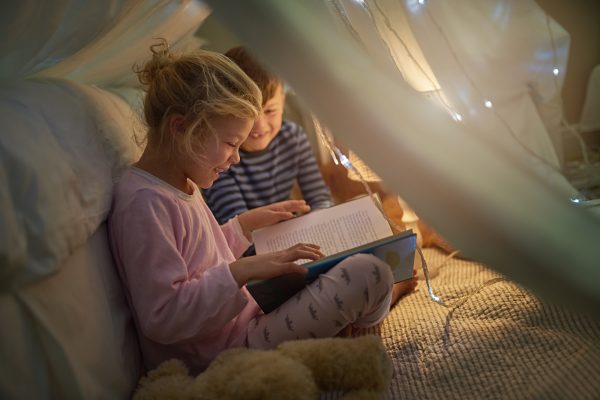
Sensory Tools That Actually Work
Through years of trial and error with families, these are the tools that consistently get used:
Touch-Based Items
Textured balls – For tactile input and proprioceptive feedback. Kids can squeeze, roll, or press these.
Fidget toys – I recommend having 3-4 different types and rotating them. What works one day might not work the next.
Stretchy toys – These provide organizing input that helps children feel more focused and grounded.
Visual Calming Tools
Sensory bottles – Homemade ones with glitter, oil, or beads work well. You can also buy them at stores or on Amazon. Watching the contents swirl is mesmerizing and calming.
Calming lights – Soft lighting that creates a soothing atmosphere without being too stimulating.
Low-lit fairy lights – Can create a calming effect. String them around the space for a cozy feeling.
Sensory calming light or light projector – Provides calming visual distraction. Many kids love watching patterns on the ceiling.
Visual timers – Help with transitions and provide structure. Kids can see how much “calm time” is left.
Deep Pressure Tools
Weighted blankets or lap pads – These can help stop the nervous system from overreacting. The deep pressure is incredibly organizing.
Compression items – Body socks and compression vests can significantly help with regulation. They provide that “hug” feeling.
Weighted stuffed animals – Provide calming pressure in a child-friendly format. Kids love holding these during upset moments.
Movement and Auditory Support
Movement Options
Small rocking chair – The rhythmic motion is naturally regulating. Back and forth movement calms the vestibular system.
Spinning chair – Use carefully and supervise, but many kids find this organizing. Some children need this intense input to regulate.
Sound Support
White noise machine – Consistent background sound can be very calming. It blocks out other distracting noises.
Nature sounds – Many families use apps with rain, ocean, or forest sounds. These are soothing and mask household noise.
Noise-canceling headphones – Essential for children with auditory sensitivities. Sometimes kids just need quiet.
Coping Support to Help Kids Understand Feelings
Books about managing emotions – Choose ones appropriate for your child’s age or emotional level. Reading together during calm times helps.
Emotion identification charts – With clear facial expressions so kids can point to how they feel.
Calm down corner posters – With visual step-by-step guidance. These work great for kids who can’t verbalize yet.
Breathing and Mindfulness Tools
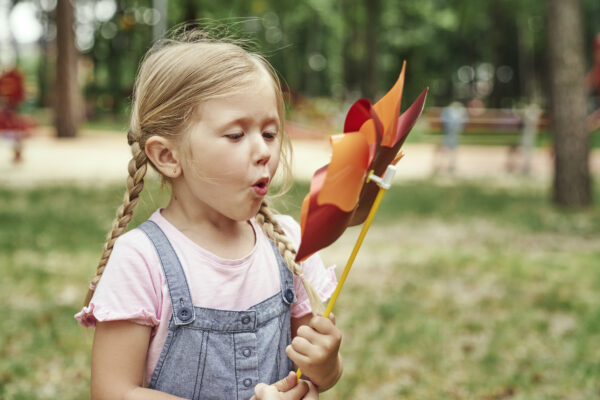
Self-Regulation Techniques
Pinwheels – For practicing controlled breathing. Blowing to make it spin gives immediate feedback.
Bubble solution and wands – For slow, intentional breathing. You have to breathe slowly to make good bubbles.
Mindful breathing lights – That guide inhale/exhale patterns with changing colors.
Mindful maze boards – For focused, calming activity. Tracing with a finger gives something concrete to do.
Breathing animations – Found on The Tantrum Tamer App. The dragon is my favorite! Visual breathing guides work wonderfully.
Quiet Activities for Distraction
Engaging Calm Activities:
Coloring supplies – Simple coloring can be very meditative and calming.
Simple puzzles – Not too challenging, just engaging enough to redirect attention.
Small building toys – Like small blocks or connectors. The repetitive building motion is soothing.
How to Make a Calm Down Corner: Setup and Location
What Makes a Good Location
Best Location Features:
Quiet area with less foot traffic – Away from main family activities and distractions.
Away from screens and noise – That could be distracting or overstimulating.
Easy for adults to check on – While still giving children privacy and personal space.
Easy to reach but feels private – So children feel safe using it without feeling on display.
Natural light when possible – For mood support and helping their body’s natural rhythms.
Step-by-Step Setup Process
Creating Your Space:
Define the space – With a special rug or mat that creates clear boundaries. This says “this is the calm space.”
Create soft visual boundaries – Using furniture, curtains, or screens. Not walls or doors that feel like punishment.
Organize items within easy reach – So children can access tools independently. Avoid clutter which can increase feelings of overwhelm.
Post visual guides at child’s eye level – For easy reference during dysregulation when they can’t think clearly.
When possible, involve your child – In choosing items and arranging the space. This increases buy-in tremendously.
Age-Specific Strategies
Toddlers (2-3 years): Mobile Approach
With toddlers or older kids in fight, flight, freeze mode, I always tell parents to bring the calming tools to the child. Don’t expect them to go to a fixed location when they’re dysregulated.
What works for toddlers:
- Comfort items they can carry anywhere
- Simple fidgets appropriate for their developmental stage
- Bubbles or pinwheels for basic breathing practice
- Soft textures that are safe for independent exploration
Preschoolers (3-5 years): Expanding Skills
This is when I see the most dramatic improvements in using a calm down corner for kids:
What works for preschoolers:
- Emotion charts that match their growing vocabulary
- Variety of sensory choices to match different preferences and needs
- Simple breathing technique cards with visual cues
- Social stories about feelings (These are incredibly effective!)
School Age (5-7 years): Advanced Self-Regulation
Older children can handle more sophisticated tools:
What works for school-age kids:
- Journaling options for kids who like to write or draw
- Independent coping strategy cards they can read themselves
- Complex fidgets that provide more sophisticated sensory input
- Emotion thermometers for rating intensity of feelings
Getting Started: What I Tell Parents
Introduce During Calm Times
I always recommend setting up and “touring” the space when everyone is regulated and happy. Practice using the tools together. Show them how each item works and when it might be helpful.
Create positive associations by spending happy, peaceful time in the space initially. Read books together there. Do puzzles. Make it a cozy, positive place first.
Offer the space proactively when you notice early signs of dysregulation. Suggest it rather than waiting for a full meltdown.
Maintaining Effectiveness
Rotate items regularly – Novelty keeps children interested and engaged. Switch things out every few weeks.
Observe what works – Every child’s nervous system is different. Adjust accordingly based on what you see.
Keep it simple initially – Start with 3-4 items and build from there. Too many choices can be overwhelming.
Respect preferences – If your child gravitates toward certain tools, that’s valuable information about their sensory needs.
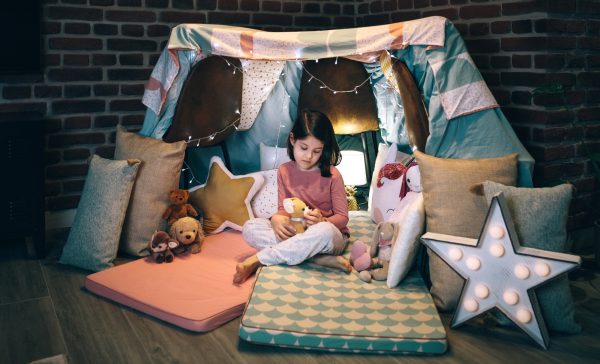
Common Questions from Parents
“What if my child refuses to use it?”
This is completely normal, especially initially. I tell parents to continue offering without pressure. Model using similar strategies themselves. Kids learn by watching us manage our own emotions.
“How long should they stay in the space?”
Let the child decide. I’ve seen kids use it for 30 seconds and others for 20 minutes. Both can be effective. Trust your child to know what they need.
“Is this just avoiding consequences?”
Absolutely not. Learning to self-regulate is one of the most important life skills we can teach. It’s not avoiding consequences. It’s developing emotional intelligence.
If you use a First/Then approach to having your child complete a requested activity before a preferred task, you should still expect them to complete the first activity. The calm down corner for kids is just a coping tool to help them regulate before completing this step.
My Recommendations
I have seen the profound impact these spaces can have. I encourage every family to try creating a calm down corner for kids. You don’t need expensive equipment or a Pinterest-perfect setup.
Start with what you have. Observe what works for your unique child. Adjust as needed.
Remember, we’re not trying to eliminate emotions. We’re teaching children that they have the power to work through difficult feelings. They’re not alone in the process.
The investment you make in setting up this space and teaching these skills will pay dividends for years to come.
For more strategies on supporting emotional regulation, read How to Calm Child Naturally: Brain-Supporting Activities.
Key Points to Remember
Let your child choose – When and how to use the space.
Don’t force or use as punishment – Offer it or bring items to them and let them choose.
Model how you handle your own emotions – Teach them to regulate by modeling using coping strategies for yourself.
Celebrate when your child uses their space – As well as when they make effort at managing their emotions.
Every child’s nervous system is unique. What works for one child may need adjustment for another. That’s perfectly normal. Trust the process, trust your child, and don’t hesitate to seek professional support if you need guidance.
Closing Thoughts
Creating a calm down corner for kids is one of the best investments you can make in your child’s emotional development. This simple space gives them tools they’ll use for life.
Start small. Be patient. Celebrate progress. Before you know it, you’ll see your child independently using their space. You’ll watch them recognize their emotions earlier. You’ll notice meltdowns becoming less intense and less frequent.
The sock seams might still bother them sometimes. They might still get frustrated occasionally. However, now they have a toolkit. They have a safe space. Most importantly, they have the knowledge that they can handle big feelings.
You’re not just creating a corner in your home. You’re building your child’s confidence in their own ability to cope. That’s powerful.
Ready to get started? Pick a spot today. Add one or two tools. Introduce it during a calm moment. Build from there. You’ve got this!
– Kendra
